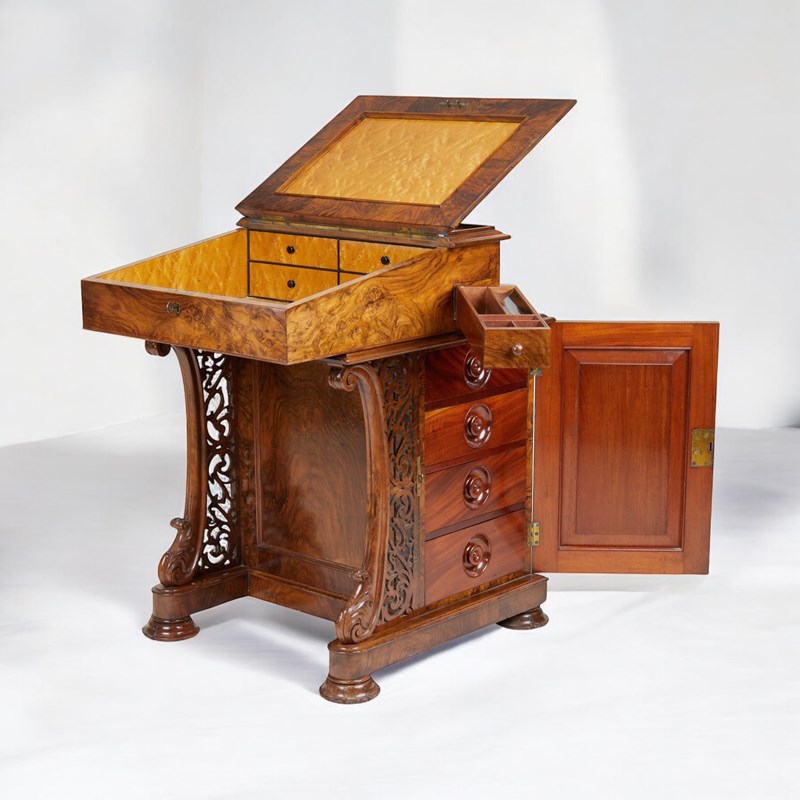Decorative Collective - www.decorativecollective.com
Sellers's Details
TINKER & TOAD
Tel: +44 (0)1435 863535
Email: [email protected]
https://www.decorativecollective.com/dealers/tinker-toadItem Details
A Fine Victorian Walnut Davenport Desk by Wilkinson & Son, London
Beautifully crafted in walnut, mahogany, and satinwood. Stamped Wilkinson & Son.
The top features a tooled leather writing surface, enclosing a large storage compartment with two drawers and two dummy fronts. A flat, galleried area above is ideal for books, files, or placing a monitor.
The writing surface slides forward to provide a comfortable seating position.
The lower section is supported by finely carved sabre legs with elegant inset lattice fretwork. One side reveals a secret compartment housing four graduated drawers with attractive turned handles. Additional storage includes a clever slide-out drawer, perfect for pens, brushes, or stationery.
The desk stands on smart cup feet with inset castors.
Crafted using the finest timbers and veneers, these ingenious desks, once overlooked with the decline of letter writing, are once again gaining the admiration they deserve.
Compact yet practical, this beautifully made desk provides ample storage and can be used with a small PC, laptop, or tablet. It also offers the optimal angle for comfortable reading or writing.
Clearance to underside of desk: approx. 64cm.
Wilkinson & Son was a prestigious London cabinetmaking firm, founded by William Wilkinson in 1808 at 14 Ludgate Hill. From the outset, the firm specialised in high-quality, often patented furniture, catering to a discerning clientele.
In the 1820s–30s, the firm became known for finely stamped Regency-style furniture under William Wilkinson & Sons, later becoming William & Charles Wilkinson after William’s death in 1833. Their work included a major commission for the Court Rooms at Goldsmiths’ Hall (1833–34), featuring carved Grecian mahogany and Rococo painted pieces.
They exhibited at the Great Exhibition of 1851, showcasing innovations like a carved walnut four-poster bed with spring mattress and veneered mahogany furniture.
By the 1880s, the firm was collaborating with leading Arts & Crafts designer A.H. Mackmurdo and the Century Guild, producing forward-thinking designs exhibited at the International Inventions Exhibition (1885) and displayed in their Old Bond Street showroom.
In 1892, the firm merged with Charles Albert and Edward Hindley to become Hindley & Wilkinson, and the remaining Wilkinson stock was auctioned off through 1894, marking the end of a celebrated chapter in British furniture-making.
- Period:
- Sold
- Location: Sussex
-
- Dimensions: H: 83cm (32.68in)
- W: 57cm (22.44in)
- D: 64cm (25.20in)
